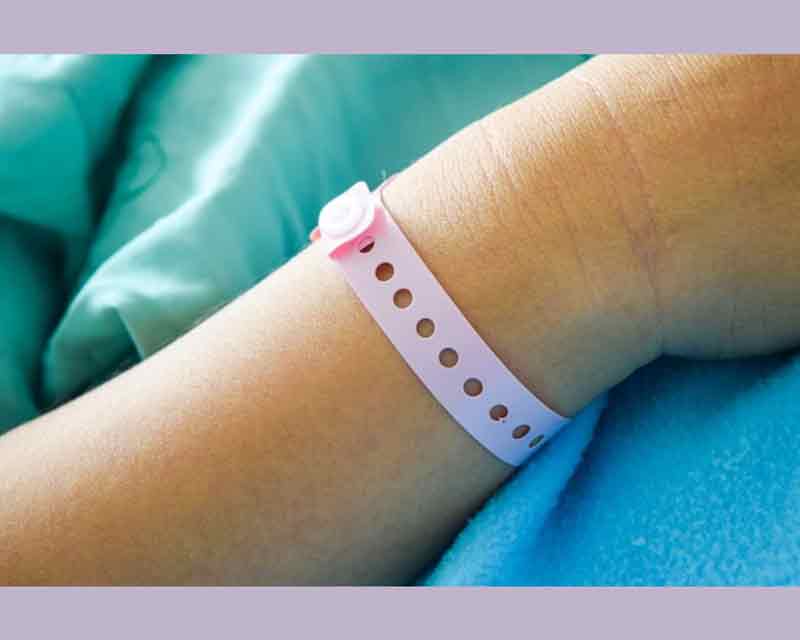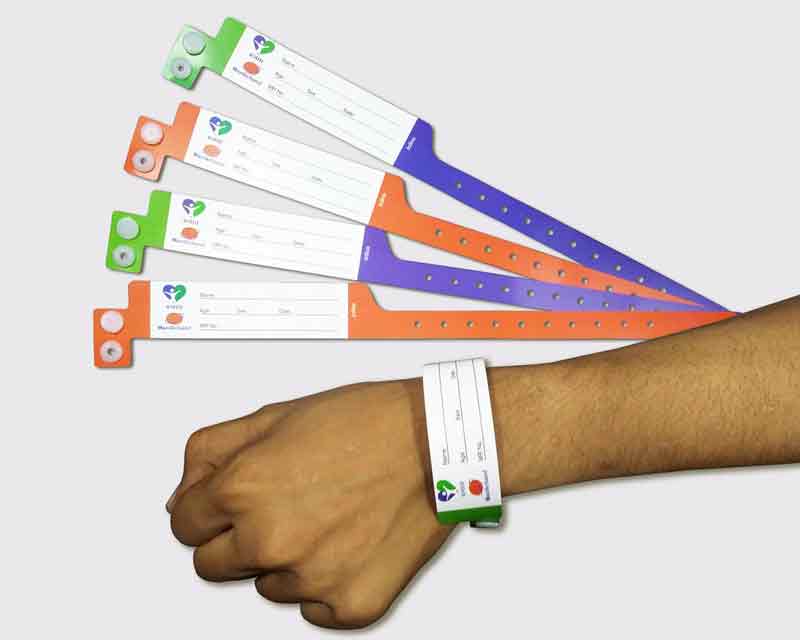Checking Out the Different Types of Patient Identification Band Utilized in Clinical Facilities
In the complex world of healthcare, the crucial role of Patient Identification bands commonly goes undetected. These bands, varying from basic paper wristbands to sophisticated RFID bands, develop the foundation of Patient safety and security procedures, making sure precision in Patient Identification. The huge variety of these bands, each with its unique advantages and constraints, is typically neglected. As we navigate with this topic, one may gain insight into the refined complexities and critical importance of such bands in clinical facilities.
Recognizing the Value of Patient Identification Bands
While they might seem like mere devices, Patient Identification bands play an essential function in medical centers. These bands serve as a critical device for validating Patient identification, stopping medical mistakes connected to misidentification. Patient Identification bands also help in enhancing administrative jobs, guaranteeing accurate record-keeping and billing.
Conventional Paper Wristbands: Their Usage and Limitations
Standard paper wristbands have actually been a staple in Patient Identification across different clinical facilities. While their use prevails, they harbor certain constraints that may impact their performance in Patient management. This section will concentrate on the extent of their application and the intrinsic downsides connected with their usage.
Paper Wristbands: Use Extent
In the world of Patient Identification, paper wristbands have actually long held a critical duty. These bands are normally used in outpatient setups, where the Patient's remain is momentary. The wristbands include essential information such as the Patient's name, day of birth, and a special Identification number. This easy, yet reliable system, enables physician to quickly and accurately identify people, making certain the right treatment is administered. Paper wristbands are additionally utilized in emergency scenarios, where fast Identification is vital. Their use includes occasions like blood donation drives and mass vaccination programs, better highlighting their versatility. In spite of improvements in modern technology, the simple paper wristband remains a affordable and dependable remedy for Patient Identification in numerous healthcare circumstances.
Limitations of Paper Wristbands
Regardless of their prevalent usage, paper wristbands are not without their disadvantages. In enhancement, paper wristbands commonly lack the technical capabilities of even more modern-day options, such as barcoding or RFID chips, restricting their performance to merely showing created info. Paper wristbands can create discomfort or skin inflammation to some clients, especially when put on for extended durations.
Barcoded Wristbands: Advancements in Patient Identification
While Patient Identification has actually long been a vital aspect of health care, the arrival of barcoded wristbands represents a substantial leap ahead. These bands utilize the simplicity of barcoding innovation, permitting for Patient information to be swiftly checked and accessed. They enhance the rate and precision of Patient Identification, minimizing the threat of medical errors associated with misidentification. Barcoded wristbands are cost-efficient, very easy to produce, and get rid of handwriting mistakes usual with hand-operated systems. They are not without restrictions. While they provide improvements over traditional bands, the barcode can become worn or smudged, making it unreadable. In spite of this, barcoded wristbands continue to be an essential device in modern healthcare settings, symbolizing the crossway of innovation and Patient care.
Radio Frequency Identification (RFID) Bands: a Step Towards Futuristic Healthcare
The advancement of Patient Identification bands has caused the appearance of Superhigh frequency Identification (RFID) Bands (patient identification band). These ingenious devices existing vital benefits for healthcare centers, supplying a much more effective and technologically progressed ways of Patient Identification. The implementation of RFID in healthcare is a substantial action in the direction of an extra futuristic approach to Patient administration and security
Understanding RFID Bands

RFID Bands: Secret Advantages
Mostly, these bands boost Patient safety by supplying exact, instantaneous Identification, consequently minimizing clinical mistakes. RFID bands can store a large amount of Patient information, consisting of clinical history and allergies, enabling customized care. Generally, RFID bands stand this hyperlink for a substantial innovation in Patient Identification modern technology, profiting both patients and healthcare service providers.
Executing RFID in Health Care
These bands offer a seamless means to track and identify people, ensuring their safety and security and enhancing performance in treatment procedures. RFID bands lower medical errors by supplying accurate Patient Identification, which is important in preventing misdiagnosis or wrong medicine administration. Therefore, the implementation of RFID bands is a substantial step in the direction of boosting Patient security and medical care shipment.

Color-Coded Wristbands: Helping in Quick and Accurate Medical Diagnosis
In the dynamic setting of a clinical facility, color-coded wristbands have arised as essential devices for swift and accurate Identification of a client's medical problem. These wristbands, used by clients, carry details colors that correspond to various medical conditions or standings. Red could suggest allergy threats, while yellow may indicate a fall risk. This system is designed to use immediate aesthetic hints to doctor, improving Patient security and care quality. In emergency situation situations, using these wristbands permits for fast decision-making. The effectiveness of color-coded wristbands depends on the uniformity of shade interpretation throughout medical care institutions, requiring common standards for regular application.
Techniques for Efficient Application and Monitoring of Patient ID Bands
Attaining ideal use of Patient Identification bands requires a well-structured technique for their execution and administration. Patient education is additionally vital; patients have to comprehend the purpose of the bands and the demand for their consistent wear. It's essential to have a back-up strategy in area, such as barcode scanning or biometrics, to make sure that Patient Identification is never ever jeopardized.
Verdict
Patient Identification bands are crucial in medical centers to guarantee safety and security and accuracy. Typical paper, barcoded, RFID, and color-coded wristbands each hold distinct benefits, varying from cost-effectiveness to sophisticated information storage and immediate clinical alerts. Effective application and monitoring of these bands can considerably lower medical errors, improve performance, and improve general Patient treatment. Thus, understanding and utilizing these Identification tools is vital for maintaining high requirements in health care.
These bands, differing from easy paper wristbands to innovative RFID bands, create the foundation of Patient safety and security methods, ensuring precision in Patient Identification.The advancement of Patient Identification bands has actually brought concerning the emergence of Radio Frequency Identification (RFID) Bands. Overall, why not look here RFID bands stand for a substantial advancement in Patient Identification modern technology, profiting both individuals and health care carriers.
RFID bands decrease medical errors by providing accurate Patient Identification, which is vital in stopping misdiagnosis or wrong medication administration. Patient education and learning is additionally critical; people have to comprehend the function of the bands and the need for their constant wear.